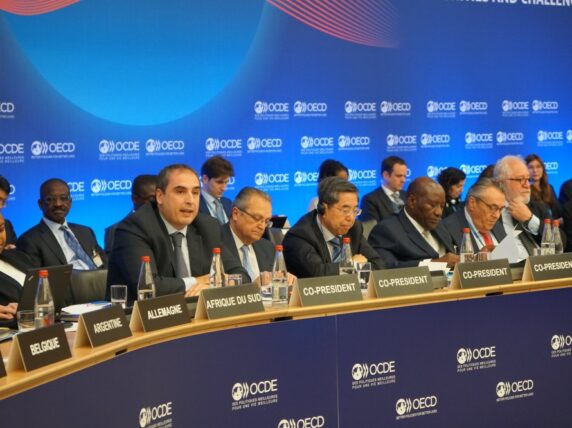The rise of Chinese development finance: risks or opportunities ahead?
China’s overseas development spending rocketed to US$69.6 billion in 2009 – more than double the US commitment that same year and a five-fold increase on China’s own 2008 lending.
Since then, China has pursued an ambitious development strategy through the Belt and Road Initiative (BRI), launched in 2013. This initiative now encompasses more than 70 countries, which is one third of global trade and over 60% of the world’s population, by the World Bank’s assessment.
As highlighted in Bond’s report on transitions shaping the UK’s international development system, China has cemented its position as one of the world’s largest development financers. And it paves new routes to development – typically non-conditional, chiefly commercial, loans to fund mega-infrastructure development projects delivered by Chinese state-owned companies.
No strings attached?
China claims its development financing comes with “no political strings attached“, unconditionally accepting the governance systems and practices of recipient countries, even when and where they fall short of international law and standards that protect human rights and the environment.
Funding comes in the form of commercial loans, state-backed investment and trade agreements wrapped up as development assistance. But of that $69.6 billion committed in 2009, only 10% was official development assistance (ODA), compared with 93% of ODA given by the US.
Subscribe to our newsletter
Our weekly email newsletter, Network News, is an indispensable weekly digest of the latest updates on funding, jobs, resources, news and learning opportunities in the international development sector.
Get Network NewsChina attractively packages these financial offers as “win-win” and the model is clearly a winner for the Chinese lenders and for the Chinese companies that typically secure development contracts. It is also undoubtedly a win for the governments that attract big money for headline-grabbing projects, especially governments who might fail to meet other donors’ expectations of transparency, accountability and their human rights responsibilities.
Is this development model a “win” for affected people and communities?
Infrastructure investment projects backed by commercial loans and carried out by large corporations can help states meet the development needs of their people and fulfil their human rights obligations. The BRI has stimulated economic growth (earning praise from the director of the International Monetary Fund), created more than 200,000 jobs and contributed to closing the infrastructure gap in many developing countries.
But the benefits of infrastructure development are rarely shared equally. More often than not, as Amnesty International has highlighted, a family, a community or an entire region will lose out. The risks and consequences of this are even greater when human rights protections are not integrated with development activity.
Amnesty and others have documented human rights abuses by Chinese state-owned and private corporations in Latin America, Africa and Asia.
Politicisation of assistance
There are other reasons to be concerned: though Chinese development assistance may come with no overt political strings attached, we have seen evidence of the Chinese authorities attempting to leverage their bilateral relations to silence criticism of China’s domestic human rights record.
The lens of Covid-19 illuminates this politicisation of international assistance. First PPE and now vaccines have been employed as tools of diplomacy, given and promised to countries of strategic interest to China with subsequent demands revealing an expected return in the form of political allegiance or public displays of gratitude.
And while China’s bilateral offering of loans for and priority access to vaccines follows an established pattern of forging China-centric alternatives to multilateral institutions, bitter rivalry with the US has actually pushed China closer towards a multilateral effort, pledging “trust and support” to the World Health Organization (WHO) to counter President Trump’s accusations of “corruption and politicization”. The US withdrawal of support for the WHO and absence from the Covax international initiative to distribute coronavirus vaccines are just two examples of huge gaps that China is only too willing to fill.
Worrying trends emerging from the pandemic
The concept of a “Health Silk Road” appears to be edging out the BRI in Beijing’s rhetoric, mirroring a downward trend of investment in the BRI exacerbated by Covid-19. The pandemic has imperilled many Chinese-backed infrastructure projects and – given the demands of public health and economic recovery at home – China is unlikely to have the finances or domestic support to rescue them all.
The implications of this nascent trend are worrying. Pre-pandemic, China’s own “economic miracle” set an example for de-coupling economic development from political freedom. This, together with Beijing’s insistence on a state’s right to choose its own “human rights development path”, handed authoritarian regimes a development gloss for their actions to reject or curtail human rights.
China’s relatively rapid “recovery” from Covid-19 has also been acclaimed – at least by Beijing itself – but came at the expense of mass surveillance, censorship, silencing critics and aggressive narrative control. It is alarming to see signs that the Health Silk Road could promote “successful” aspects of China’s pandemic response that disproportionately infringe on human rights, such as digital surveillance or transport lockdowns that prevented people from accessing medical care.
Though there are many justifiable reasons to criticise the BRI, any retrenchment of Chinese lending amid a pandemic and global financial crisis is likely to exacerbate the economic and social problems that the BRI purportedly aims to address in many developing countries. For many emerging economies, China has become one of the largest providers of development finance in part because funding from OECD donors has declined. China is now a bigger presence in international development finance than the world’s six major multilateral financial institutions put together. Many developing countries have few options other than to rely on China.
New routes to development
OECD donors and traditional development actors must adapt and rise to these new trends being led by China. The International Monetary Fund recently proposed a new international debt architecture to reflect and respond to the new players and shifting power in international finance, including China.
Multilateral and bilateral donors should also move with these new routes to development, harnessing the positive potential of China to bridge development gaps, while vigilantly defending the human rights obligations by which they and China are bound – and which ultimately lead to better, more sustainable, development outcomes.
Check out our report, Four transitions re-shaping the UK’s international development system, to explore the new routes to development INGOs need to consider over the next 10 years.
Category
News & Views



